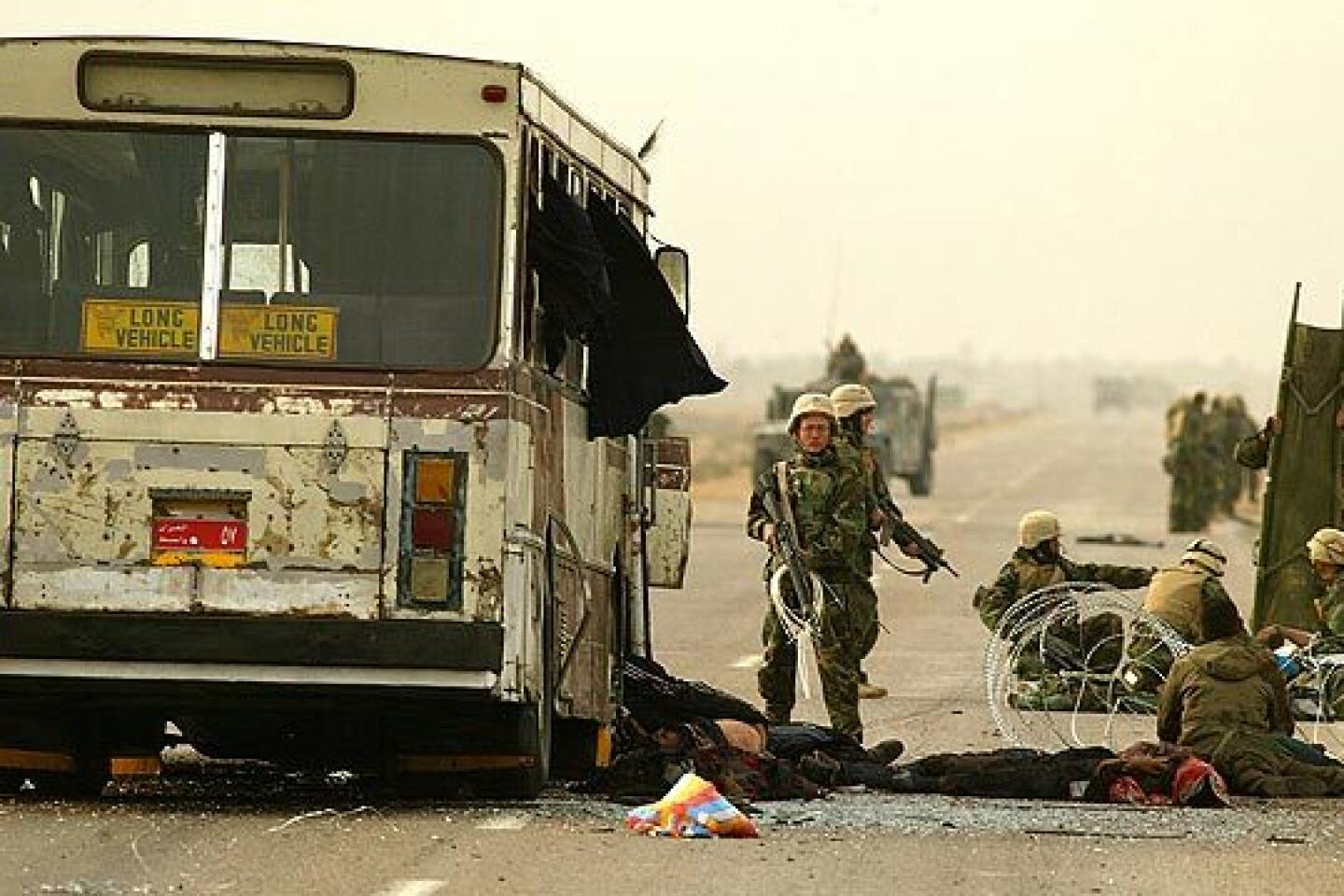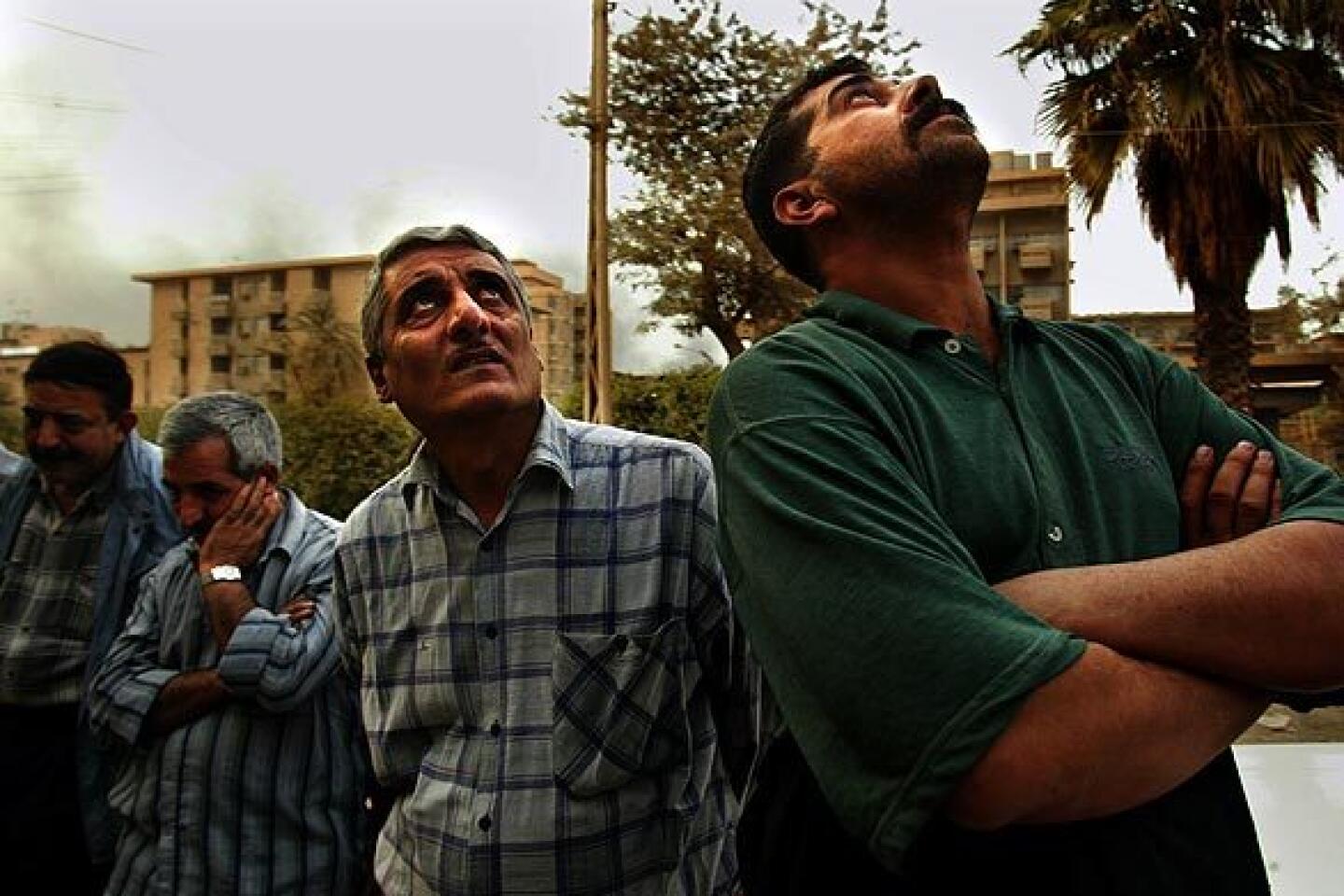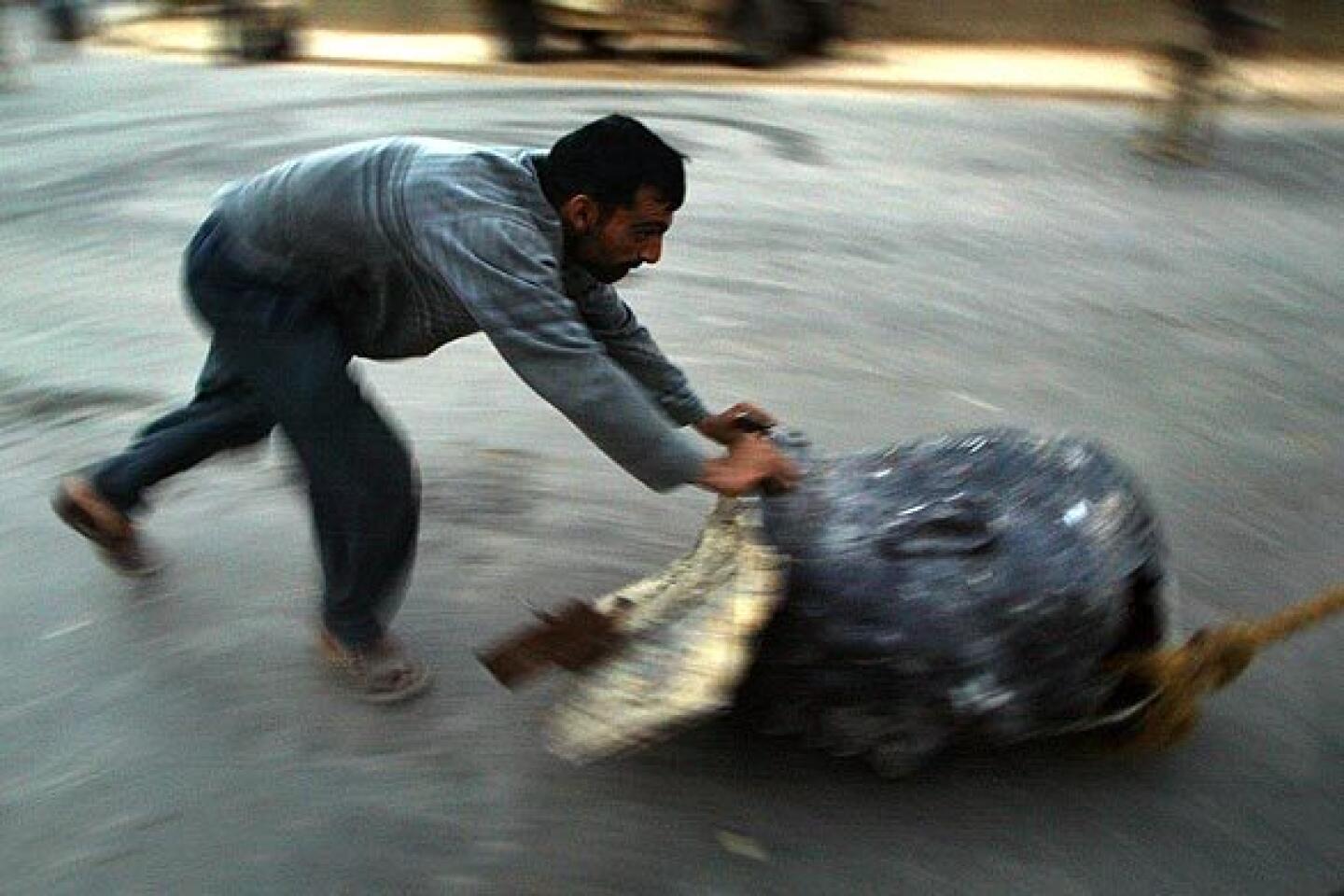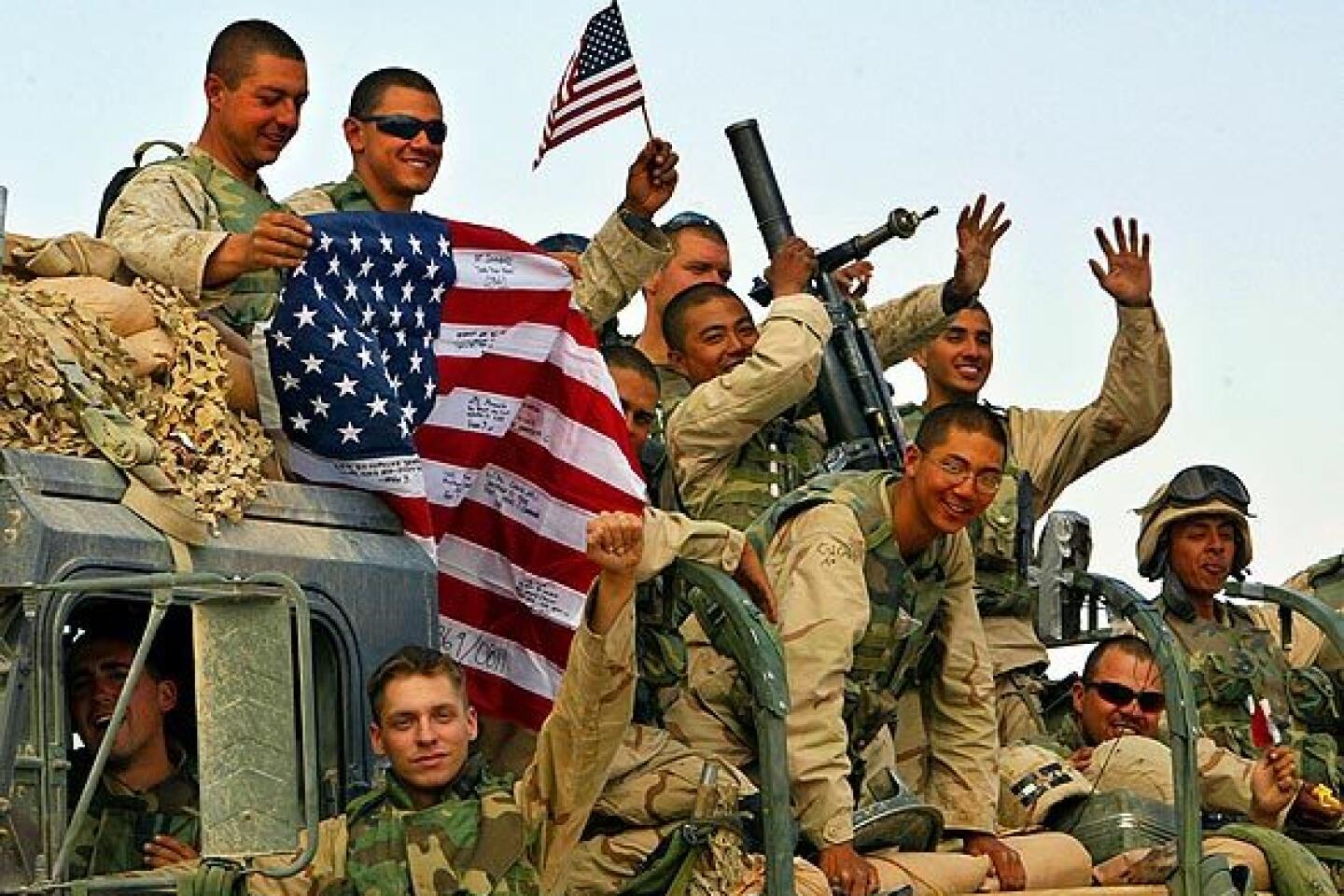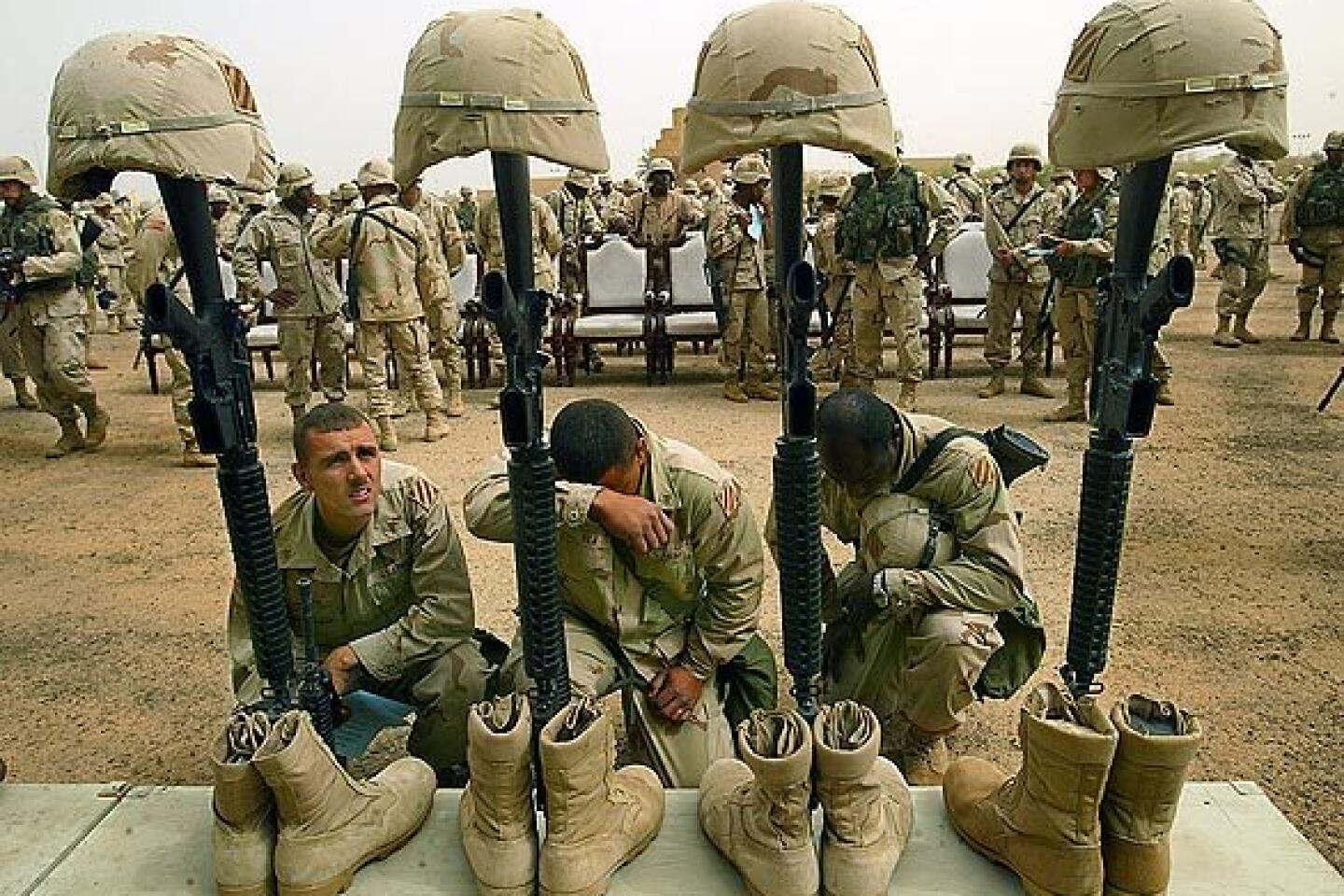Foreign fighters in Iraq seek recognition, U.S. says
Young, lonely and struggling to make a mark.
The U.S. military Sunday presented a profile of foreign fighters, who are blamed for about 90% of the suicide bombings that have claimed thousands of lives in Iraq. It was based on interrogations of 48 men captured by U.S.-led forces here in the last four months, Navy Rear Adm. Gregory Smith told reporters at a briefing inside Baghdad’s fortified Green Zone.
Smith said most militants were single men in their late teens and early 20s recruited by Al Qaeda in Iraq, a largely homegrown Sunni Arab militant group that the U.S. military says is led by foreigners. They typically come from large, lower-income families in which they struggled to be noticed.
“Most of these young men wanted to make an impression, but paradoxically they did not tell their families they were going off to Iraq to fight for Al Qaeda out of fear of disapproval,” said Smith, a U.S. military spokesman.
Smith’s presentation comes at a time when the number of high-profile suicide attacks in Iraq has inched up, many of them carried out by bombers with explosives strapped to their waists.
U.S. officers stress that the number of attacks overall remains down since the military finished sending an additional 28,500 troops to Iraq in June. But Smith acknowledged that a modest rise in attacks using explosives vests, including 18 in February, was troubling.
“It is a difficult target to stop, and the only effective way is to take down the networks that feed this type of terrorism,” he said.
In the latest such attack, a man blew himself up Sunday in front of a Kurdish political party office in the northern city of Mosul, injuring a guard and six civilians, police said. Two policemen were injured by a roadside bomb on their way to the scene, police said.
Fighters also have started to wear explosives vests and blow themselves up when captured, Smith said, a tactic previously used only by senior leadership.
The interviews conducted with detainees are helping U.S. forces to understand the backgrounds, motivations and recruitment of foreign fighters. Smith said most were from the Middle East and North Africa, including about 40% from Saudi Arabia.
More than half of the approximately 240 foreign fighters in U.S. custody come from Saudi Arabia, Egypt and Syria, according to figures provided separately by the military.
Smaller numbers were recruited in Jordan, Sudan, Libya, Yemen, Kuwait, Tunisia, Morocco and Algeria. In addition, several hundred foreign fighters are in Iraqi custody.
Most described their upbringing as religious but not extremist, Smith said. Many said their fathers were harsh and often abusive. Most reported little or no previous military experience. Before they were recruited, many worked as taxi drivers, construction workers and in other low-paying jobs. Others were students.
Their recruiters preyed on their desire for recognition, acceptance and friendship, Smith said.
Many detainees told their interrogators that they were first approached at their mosques. Others were approached at work and invited to attend discussions at the mosque.
These conversations would begin as a harmless discussion about Islam that over several weeks would shift to the war against U.S.-led forces in Iraq, he said.
The recruits were often shown videos of Americans purportedly abusing Iraqis and were urged to help avenge the mistreatment by killing Americans, Smith said. Insurgent strikes against U.S. forces also were shown.
Once they agreed to join the fight, most of the young men were flown to Syria and then smuggled into Iraq by road, he said. The facilitators who met them in Syria often entertained them at nightclubs and bars during the months it sometimes took to get them to Iraq, Smith said.
But when they reached Iraq, those destined for suicide missions were sequestered in safe houses with copies of the Koran and few other amenities. They complained that their Iraqi handlers looked down on foreigners, did not give them enough food and treated them harshly, Smith said.
Some spoke of their disillusionment on discovering that most of the attacks carried out by insurgents were directed against the Iraqi people rather than U.S. forces.
“Again and again, we heard this reality bothered the recruits,” Smith said. “They had not come here to kill Iraqi civilians. . . . They felt misled.”
Eventually, most just wanted to go home, he said. But their handlers had their passports and their money, so they felt trapped.
All 48 fighters interviewed by U.S.-led forces were men, but a growing number of suicide attacks have been conducted by Iraqi women.
U.S. officers have suggested that the insurgents are using women because they attract less attention. The insurgents may also be having difficulties recruiting foreign volunteers.
About 120 foreign fighters were entering Iraq each month at the peak of the influx in mid-2007, but that figure has dropped to about 40 to 50, Smith said.
A special correspondent in Mosul contributed to this report.
More to Read
Sign up for Essential California
The most important California stories and recommendations in your inbox every morning.
You may occasionally receive promotional content from the Los Angeles Times.








